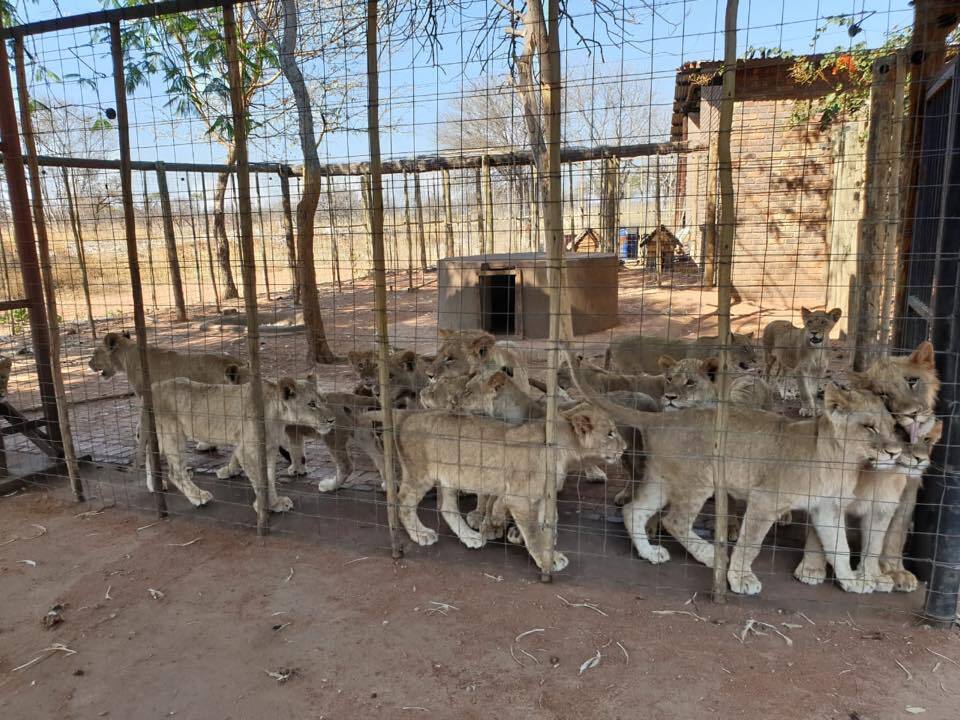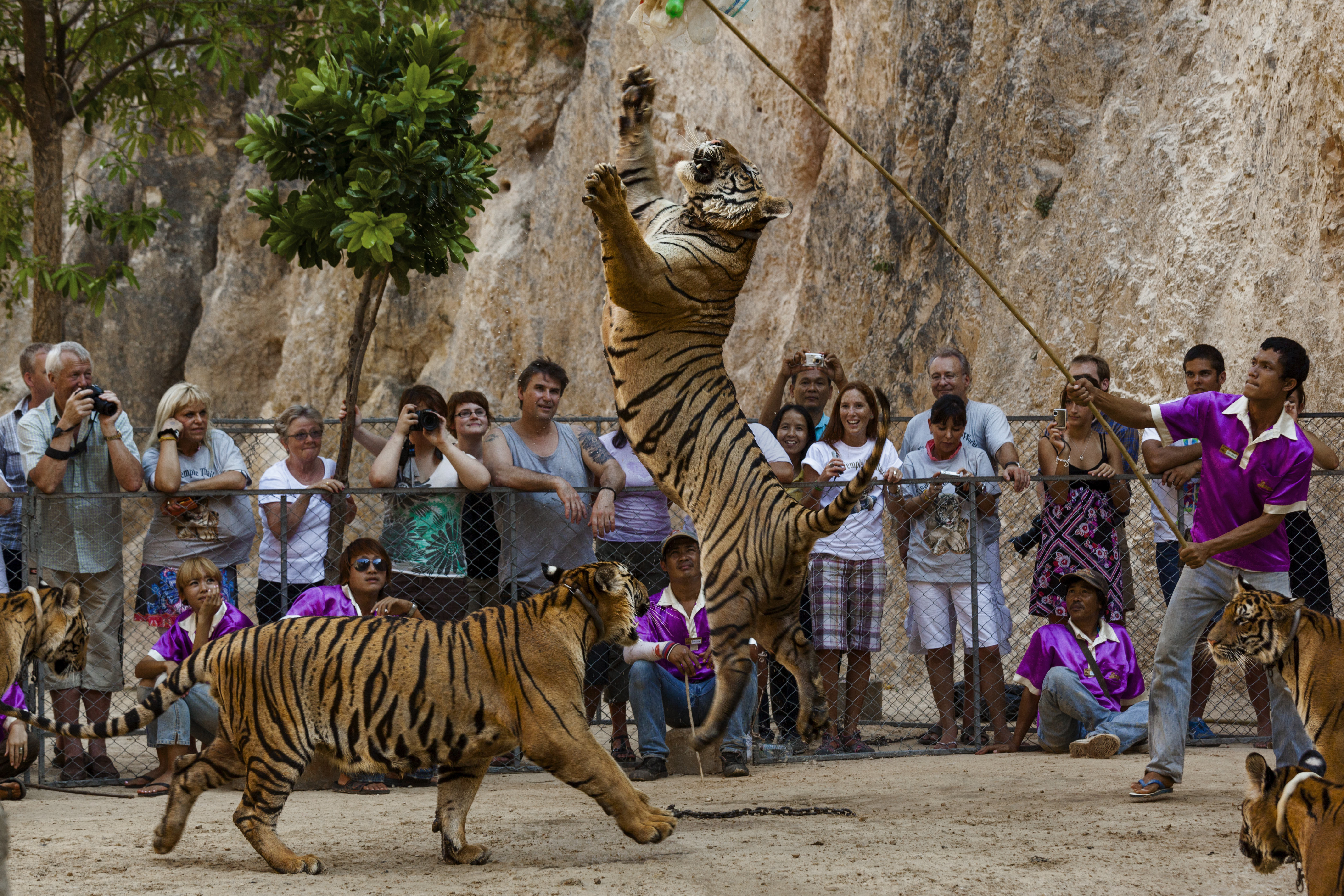 © Blood Lions
© Blood Lions
Panthera opposes the captive breeding of wild cats for commercial trade and exploitation. The commercial captive breeding industry, even where it operates legally, is linked to the illegal wildlife trade and to the trafficking of wild cats and their parts for luxury products, traditional medicine and other consumer uses.
News Updates
December 20, 2022: Big Cat Public Safety Act Becomes Law, Ending Private Ownership of Big Cats in the U.S.
In a victory for wild cats and people, the Big Cat Public Safety Act has become law following years of advocacy and bi-partisan support for the common-sense measures. The new law will prohibit the possession and breeding of big cat species, including tigers, lions and jaguars, except by qualified entities like the Association of Zoos and Aquariums (AZA). The law will also require owners to register animals with the authorities and restrict direct public interaction with these species, including activities like cub-petting and selfies with wild cats, as seen in the Netflix docu-series "Tiger King."
Why was this law needed?
A confusing patchwork of laws and regulations on big cat ownership in the United States has allowed “backyard breeding” of wild cats like tigers to grow unchecked. Businesses that exploit these animals for profit—especially cubs—have flourished, creating an animal welfare and public safety nightmare. A lesser-known but serious consideration is the potential for captive-bred cubs to be trafficked as pets once they are too big for tourists to handle safely and for the parts of animals to enter the illegal wildlife trade when they are killed or die in captivity. If rigorously enforced, the Big Cat Public Safety Act will not only reduce the number of big cats in captivity and protect people from potentially dangerous interactions with them, but will also help ensure that the U.S. is not contributing to an industry with insidious implications for big cats, many of which are threatened by poaching and illegal trade in their parts.
What’s next?
Panthera applauds the passage of the Big Cat Public Safety Act and hopes to see regulations put into effect that strongly protect captive and wild cats and will be strictly enforced. We recommend that existing, privately owned wild cats are spayed and neutered, implanted with tracking microchips and cremated upon death to help prevent illegal trade of their parts.
Read More:
May 5, 2021: Panthera Applauds South African Government’s Decision to End Commercial Captive Lion Breeding and Bone Trade, Urges Permanent Legislation Banning Industry.
There are believed to be at least 8,000 lions in captivity at 366 private facilities in South Africa. Most of these facilities make money by offering cub feeding, selfie opportunities, walking with lions and other tourist interactions.
Although many of these facilities market themselves as supporting conservation, there’s no evidence that commercial breeding benefits wild lions. Commercially captive-bred lions can’t help to recover vanishing wild populations, and the industry does not provide significant financial support to wild lion conservation.
Meanwhile, there’s increasing concern about the rise in poaching of wild lions in some parts of Africa for the illegal trade in their body parts. The sources of demand and potential links to South Africa’s captive breeding industry and associated legal lion bone trade are now being studied.
What Is Commercial Captive Breeding?
Commercial captive breeding refers to the intensive breeding of wild cats for trade and profit. While some of these programs claim to support conservation, in truth there is no evidence that they do so.
In contrast, accredited captive breeding programs are designed to support species conservation and maintain captive populations at an appropriate scale. Panthera supports the efforts of the American Zoo Association’s Species Survival Plan, the European Zoo Association’s European Endangered Species Programme and other breeding programs managed by members of the World Association of Zoos and Aquariums to conserve wild cats through public awareness and education, research, demographic and genetic back-up for wild populations and, in some cases, the reintroduction of captive-bred animals into the wild.
What Does Science Say?
Commercial captive breeding:
- Does not contribute to the conservation of wild cats. Unlike internationally accepted captive breeding programs designed explicitly for species conservation, commercial facilities breed cats to profit from legal and illegal trade in their body parts, and tourist activities like cub-petting and selfies. Commercially captive-bred big cats cannot help to restore wild populations.
- Threatens animals and humans. In Asia, South Africa, the United States and elsewhere, commercially captive-bred wild cats are often kept in crowded, unhygienic conditions known to breed diseases. Such facilities often contain a variety of wild animals in close proximity, creating ideal circumstances for disease transmission among species and presenting a serious risk to animals and humans.
- Provides a channel for illegal trade in cat parts. Legal trade in captive-bred cats often parallels the illegal wildlife trade, providing a channel to launder cat parts poached from the wild. The legal trade legitimizes the use of wild cat parts for traditional medicine and luxury items, frustrating efforts to curb demand for illegally sourced products and confusing consumers who may not know the difference.
 © Steve Winter / National Geographic
© Steve Winter / National Geographic
61 tigers at the temple. All of the tigers were born at the temple, however the temple started years ago with wild orphan cubs. Its called a "temple" but its registered as a zoo. Visitors can get pictures taken with tigers, walk with tigers, feed tigers, and sit on tigers. Steve Winter photographed at the Tiger Temple for two days. Thailand Tiger Temple; near Kanchanaburi, Thailand - tigertemplethailand.com
What Needs to Change?
Panthera recommends that countries engaged in commercial captive breeding of wild cats initiate plans to rapidly and responsibly phase out such operations. In the interim, we call for time-bound, specific actions to prevent commercial captive breeding facilities from supporting and supplying the illegal wildlife trade and to reduce their adverse impacts on wild cat populations:
- Phase out commercial captive breeding operations;
- Increase monitoring of existing facilities and enforcement of existing laws;
- Close loopholes in existing wildlife trade statutes;
- Clearly define operating guidelines and plans for enforcement and penalties;
- Develop a comprehensive plan to destroy existing carcass stockpiles;
- Increase education and awareness programs to reduce demand for wild cat products;
- Develop and institute protocols to identify and track captive-bred wild cats;
- Institute spay/neuter and separation programs at commercial breeding facilities; and
- Support research to better understand the impact of captive breeding facilities on wild cat populations.




